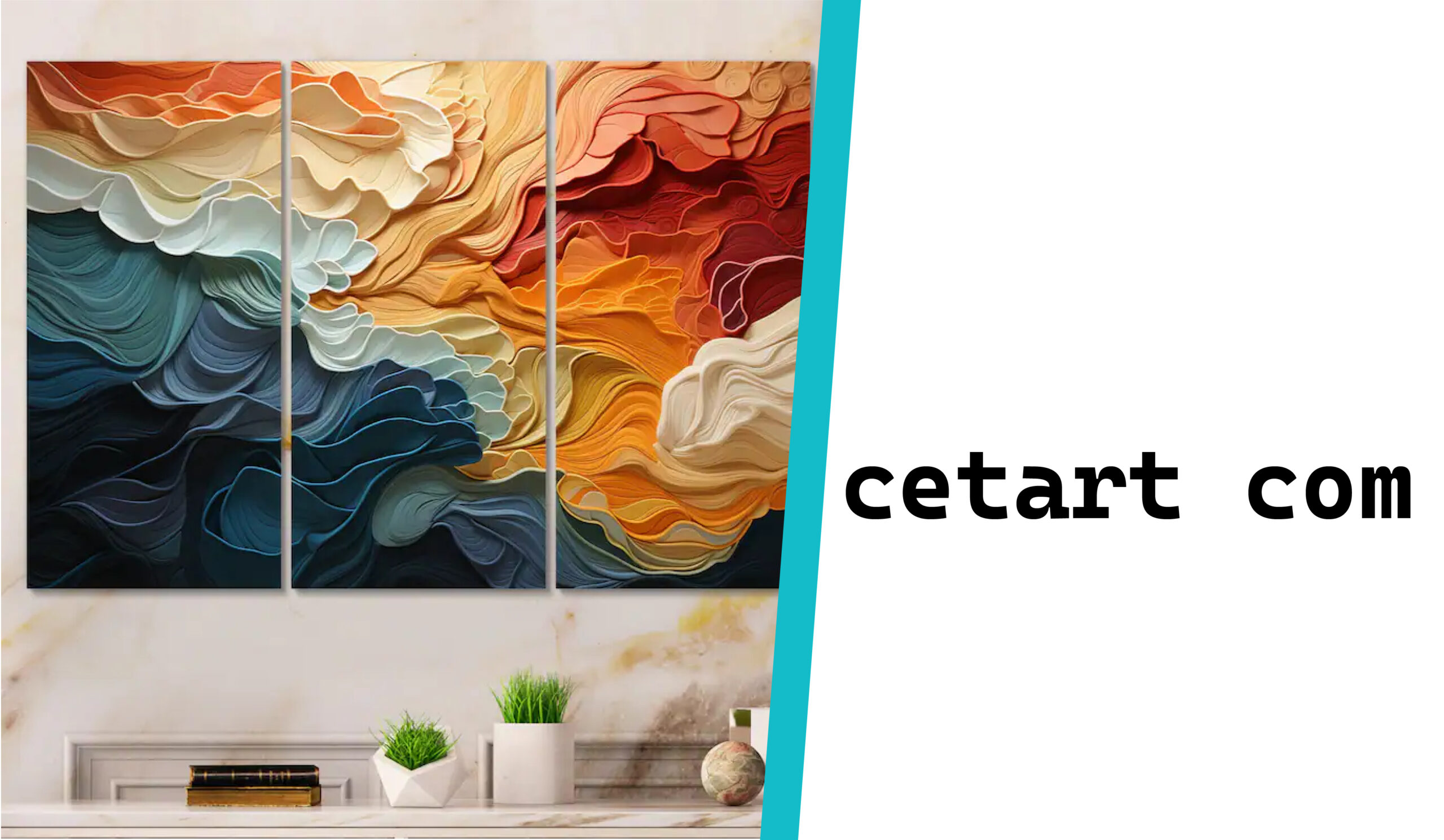Creating a home that feels both soothing and alive isn’t about filling every wall—it’s about intention. The right artwork doesn’t just decorate; it influences the rhythm of your space, directing how light, color, and emotion flow through a room. Whether you’re leaning toward biophilic calm or expressive energy, modern animal wall décor can become the subtle storyteller that grounds your design. From wide-open horizons to intimate animal portraits, pairing tone, proportion, and placement transforms rooms from static to soulful.
Below, we’ll explore how to build that balance—starting with the serenity of modern landscape wall décor before layering in the personality of wildlife art. Together, they create interiors that breathe and move.
1. Setting the Mood: The Emotional Power of Art in Interiors
Every wall tells a story before you even realize it. A large-scale artwork can set the tone faster than a rug or light fixture. Soft horizons expand the visual field, helping small rooms feel airier, while pieces rich in texture or motion inject energy and intimacy. When you choose artwork deliberately—matching not just colors, but the feeling you want to evoke—you transform your home into a sensory experience.
Designers often talk about “visual rhythm,” that subtle back-and-forth between calm and character. To achieve it, begin by establishing a serene foundation, then build layers of texture, movement, and personal meaning.
2. The Calming Foundation: Bringing Biophilic Energy Indoors
Our eyes instinctively rest on nature. It’s the original backdrop that restores focus, lowers stress, and brings cohesion to mixed styles. This makes landscape-inspired wall art one of the most grounding tools in interior design. Whether it’s a coastal mist, a quiet treeline, or a soft botanical abstraction, pieces that echo nature’s hues and horizon lines introduce calm without fading into the background.
Choosing a Palette That Feels Balanced
Start with the hues already anchoring your space. Sage and olive tones soften warm neutrals like sand, beige, and caramel, while slate-blues or soft grays complement cooler modern palettes. To maintain visual flow, repeat a few tones from your art in textiles—cushions, throws, or area rugs—so the room feels connected rather than pieced together.
People Read Also: Crew Disquantified Org: An In-Depth Exploration of a Unique Organizational Model
Biophilic design thrives on subtle repetition: the rhythm of tree lines, the curve of a mountain, the fluid fade of a sunset. These organic patterns naturally quiet the mind, encouraging longer moments of pause.
3. Designing with Horizon Lines and Breathing Space
Every wall benefits from “visual air”—the negative space that allows your eye to rest. When art mirrors the feeling of distance (a lake’s horizon, an open sky, or a sweeping meadow), it keeps interiors from feeling boxed in. Even in urban lofts or compact apartments, these scenes stretch the imagination outward.
Early to mid in your decorating process, consider incorporating landscapes & nature wall art as the palette foundation. Choose works that echo your undertones—sage for warm beiges, slate-blue for cooler grays. For a statement above a sofa or bed, size the piece to about two-thirds or three-quarters of the furniture width and hang it so the center aligns around 145 cm from the floor. Seek artwork with open composition—wide skies, light horizons, or distant silhouettes—to keep sightlines breathable. Consistency in frame finish (black, oak, or white) ensures the collection reads as a unified concept rather than separate pieces.
When chosen well, these elements form the calm anchor of your interior. They don’t demand attention, but they hold it quietly, creating the visual pause every room deserves.
4. Framing Calm: How Materials Reinforce Mood
The frame is the boundary between your art and your room’s architecture, so it matters more than most people realize. A matte oak frame reinforces warmth and organic texture; black or white frames provide a clean, gallery-like finish that suits minimalist spaces. Floating frames add lightness, letting the image feel suspended rather than enclosed.
When curating multiple landscape or botanical prints, consistency is key. Matching frame finishes help create harmony even when the subjects vary—say, a misty forest next to a rocky shoreline. The repeated edge tone acts as a thread, allowing the art to be appreciated as a narrative rather than individual scenes.
Lighting also plays a quiet but important role. Soft diffused light—natural daylight or wall-mounted sconces—enhances the natural texture and depth of landscape works. Avoid harsh spotlights; they can flatten the subtle gradations of tone that make nature art so soothing.
5. Layering Depth: How to Mix Media and Scale
A single oversized canvas can be powerful, but pairing different formats adds rhythm. Combine one large horizontal piece with smaller verticals or square prints nearby. The trick is balance—group art by visual weight, not just size. A moody, darker piece may feel “heavier” than a pastel seascape of the same dimensions.
Consider scale relative to wall shape and furniture. Wide walls invite panoramic landscapes, while tall, narrow sections suit vertical compositions like treetops or waterfall scenes. For an eclectic but harmonious gallery wall, maintain consistent spacing (5–7 cm between frames) and align the midline of all pieces along one invisible axis.
6. Introducing Motion and Character: The Role of Wildlife Art
Once your foundation of calm is set, it’s time to reintroduce life. The stillness of landscapes gives way to the movement and energy of wildlife forms—birds in flight, gazes that follow you across the room, silhouettes mid-leap. These pieces transform a static wall into something almost conversational.
Wildlife imagery bridges emotion and dynamism. It brings warmth to minimalist rooms, charisma to quiet corners, and personality to transitional spaces like entries and offices. The human eye connects instinctively with animal eyes—those points of focus that make a room feel subtly alive.
7. From Calm to Character: Balancing Stillness with Energy
Decor is choreography. After establishing serenity through landscapes, you can let wildlife pieces introduce rhythm and individuality. The goal isn’t contrast for its own sake—it’s balance. Too much calm can read sterile; too much motion can overwhelm. Together, they keep your interiors emotionally dynamic.
Later in your design process—around two-thirds through your art selection—layer in pieces like animal Modern Canvas Prints to introduce life and texture. In minimalist rooms, opt for close portraits with quiet backgrounds—think a heron’s profile, a horse’s silhouette, or a fox’s steady gaze. In rustic or eclectic spaces, wider scenes with soft earth tones feel more authentic. Maintain about 5–8 cm spacing between works in pairs or trios, and match orientation to your wall: portrait for narrow columns, landscape for wide spans, square for symmetry above consoles. Use an accent tone from the artwork—olive, amber, or cobalt—to tie in with cushions, throws, or ceramics nearby. This subtle repetition builds cohesion without resorting to rigid matching.
8. Where to Place Wildlife Art for the Greatest Impact
Wildlife art thrives in spaces meant for connection. Living rooms, home offices, and entryways all benefit from a hint of vitality. In social areas, dynamic compositions spark conversation; in work zones, they offer moments of visual reset—something to meet your gaze during long hours.
If your landscape pieces live above sofas or beds, try placing wildlife art opposite or adjacent. This interplay of distance and intimacy—one evoking openness, the other a living presence—creates spatial dialogue. In transitional areas like hallways, a single animal portrait can serve as a quiet sentinel, grounding the space between rooms.
9. The Art of Editing: Knowing When to Stop
Curating is as much about restraint as selection. Not every wall needs art; blank space has its own eloquence. When everything in a room calls for attention, nothing truly resonates. Before hanging the final piece, take a step back. Ask yourself: does this wall feel balanced in emotion, not just composition?
One effective method is to photograph the wall and view it in grayscale. Without color distraction, you’ll instantly see whether one piece dominates too strongly. Adjust spacing or size until each artwork contributes equally to the room’s overall mood.
10. Styling Beyond the Frame
Art doesn’t exist in isolation—it lives in conversation with your furniture, lighting, and décor. Complement your chosen pieces with natural materials: linen upholstery, rattan baskets, clay vases, and tactile throws. These elements echo the organic spirit of your landscapes and wildlife imagery.
More Stories: Life of Vivian Ridge: Facts About Bob Ross’s First Marriage
In modern settings, contrast nature art with structured forms—geometric side tables, sleek lighting, or metallic accents. This interplay keeps the aesthetic fresh, ensuring the natural themes feel contemporary rather than rustic. A well-chosen artwork should look timeless, able to evolve as your furnishings change.
11. Building a Home That Breathes
Ultimately, your home’s walls are more than boundaries—they’re the silent pulse of your daily life. Art helps regulate that rhythm. Landscapes open the space outward, creating calm and continuity. Wildlife reintroduces energy, motion, and intimacy. Together, they weave a narrative that reflects both peace and vitality.
By starting with nature’s horizon lines and layering life through animal imagery, you’re not just decorating—you’re composing an atmosphere. The calm moments invite you in; the spirited details keep you there.
Final Thought
Great design is less about what’s on trend and more about what feels timelessly restorative. When art is chosen for emotion rather than scale alone, it transforms every glance into an experience of calm or connection. From the whisper of a forest dawn to the focused gaze of a stag, your walls can tell stories that never stop breathing.











